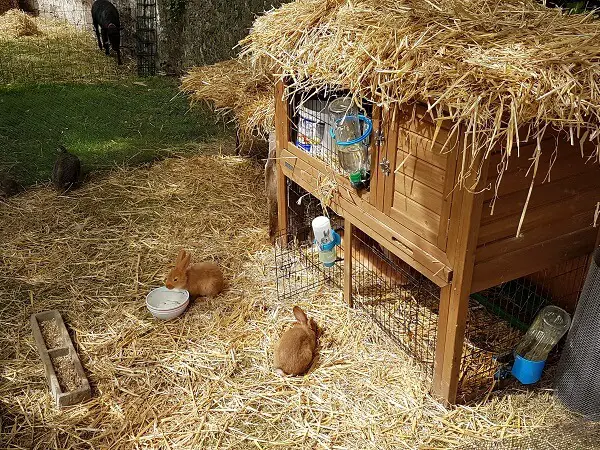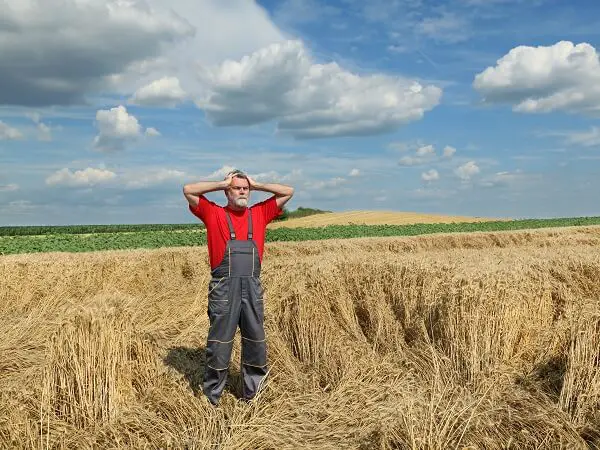Estimated reading time: 8 minutes
If you are a homesteader, you likely know all too well that the margin for error is often slim. Even small mistakes can end up being incredibly costly over the long-run in terms of both time and money.
Whether you are new to homesteading and looking to avoid expensive beginner mistakes, or a homesteading veteran wanting to make sure a costly error doesn’t slip by, here are eleven homesteading mistakes that you will certainly want to avoid.
Want to save this post for later? Click Here to Pin It on Pinterest!
Mistake #1: Not Budgeting Your Money
There’s no getting around the fact that homesteading is expensive, especially in the beginning. Even if you start small with just a little bit of land, your expenses can still climb quickly and dramatically.
Unless you have a well-thought-out budget in place, these expenses can eat through your savings at blinding speed, leaving you broke before you ever learn how to turn a profit from homesteading. To avoid this, take the time to create an effective budget and stick to it every step of the way.
Mistake #2: Purchasing Land Too Quickly
If you are thinking of venturing into homesteading, start out by working with what you have rather than jumping at the first opportunity to purchase new land. Even if you live in an apartment complex, you can still start out by growing plants in containers, canning your produce, composting, and more.
Regardless of where you live, starting out with the property you have will teach you the skills you need to take your homesteading to the next level. In the end, this is a far better approach than diving head-first into an expensive property purchase before you’ve had time to work out some of the kinks in your homesteading plan.
Mistake #3: Overestimating Your Abilities
People who research homesteading online often walk away with the idea that homesteading is a relatively easy goal that anyone can achieve with enough effort. In reality, homesteading is incredibly difficult. To succeed, you are going to need a lot of time and practice. To make matters even more difficult, every aspect of homesteading must be mastered individually.
Raising rabbits, for example, is an entirely different skill from growing a garden, and being an expert in one will in no way make you an expert in the other. Before you commit your time and money to homesteading, it’s important to understand just how difficult homesteading can be and not overestimate your abilities.

Start small, take it one step at a time, and learn as you go to avoid biting off more than you can chew.
Mistake #4: Selecting a Poor Location
Location matters just as much to homesteaders as it does to real estate agents. While a great location can give you a major boost toward reaching your homesteading goals, a poor location can make reaching those goals almost impossible.
Before you purchase a piece of property, make sure to thoroughly research it first. A single visit alone is not enough to know whether or not a piece of property will be suitable for homesteading. Before you start writing a check, you’ll need to know what the property is like during all four seasons, how much rainfall it receives, how prone it is to flooding, what the soil is like, what wildlife is present in the area, and more.
If you take the time to thoroughly look into all of these factors, you can select a piece of property that is ideal for homesteading rather than purchasing a piece of property that makes homesteading difficult.
Mistake #5: Expecting to be Self-Sufficient Too Soon
Self-sufficiency is a goal that is very important to many homesteaders. However, it’s also a goal that takes a lot of time and hard work to achieve. Unfortunately, many people enter into homesteading with the idea that they are going to be able to fully support themselves and their families within the first couple of years.
In most cases, though, it is going to take much longer than this to achieve self-sufficiency. Homesteading comes with a serious learning curve, and this learning curve cannot be underestimated. While being self-sufficient is certainly a goal that is worth pursuing as a homesteader, it’s a long-term goal and one that you should not expect to achieve in the first year.

Mistake #6: Trying To Go It Alone
Homesteaders are often very solitary people who prefer to work things out for themselves rather than rely on others. In fact, it’s this very trait that leads many people to take up homesteading in the first place.
Trying to succeed at homesteading all on your own, though, is a big mistake. Both online and in the real world, there are large communities of homesteaders who are happy to share their knowledge and help out newcomers. Especially when you are first starting out, this assistance can be invaluable.
If you run into problems while you are homesteading that you don’t know how to answer – which you will – don’t be afraid to turn for others for advice. Asking the right questions to the right people may end up saving you from a very costly mistake.
Mistake #7: Putting Too Much Money Into Your House
If you are new homesteader moving from an urban location to rural location for the first time, it can be tempting to spend more money than you should on your new house rather than putting that money into your homestead. This temptation is understandable seeing as first-time homesteaders moving to a rural location are no longer restricted by things such as zoning requirements and limited space.
Unless you have money to spare, it’s better to put building the farmhouse of your dreams on the backburner and focus on building the farm of your dreams first.
Mistake #8: Burning Yourself Out
Homesteading is a lot of work. There is no point in the homesteading journey where you can put the operation on cruise control. Instead, hard work is going to remain a requirement at every phase.
In the beginning, though, the seemingly endless number of tasks you need to complete in order to begin homesteading can often be especially overwhelming. During this initial part of the homesteading process, as well as during every phase that comes after it, it's essential that you don’t burn yourself out.
There’s nothing wrong with working hard, and you are no doubt going to have to work incredibly hard just to have a chance of being successful. But working to the point that you are physically and mentally exhausted is not going to be beneficial. In the same way that you have to learn how to budget your money when you take up homesteading, you’ll need to learn how to budget your time in order to avoid burning yourself out.
Mistake #9: Starting Too Many Projects at Once
When you first begin homesteading, the number of tasks that need to be completed and projects that need to be started is seemingly endless. Faced with this near-infinite list of potential projects, many homesteaders will make the mistake of starting way too many projects at once.
Homesteading, however, is best completed one project at a time. You don’t want to start building a chicken coop, for example, when you’ve just begun planting your garden. Otherwise, both of these projects are likely to suffer. Instead, compile a list of the projects that you need to complete, rank them in order of importance, then start checking them off the list one by one, giving each project your full attention before completing it and moving on.
Mistake #10: Not Creating a Plan
If you are venturing into homesteading with the idea that you are going to “wing it”, you better take a step back and think again. Being successful at homesteading is a complex and difficult goal. It’s difficult enough to achieve even with a detailed and well-thought-out plan. Without one, it’s almost impossible.
Before you begin homesteading, take the time to create both a long-term and short-term plan. What needs to be accomplished first? Where do you want your homestead to be one year from now? What will it take for you to reach self-sufficiency? These are the type of questions that you will need to thoroughly answer if you want to succeed.
Mistake #11: Not Learning From Your Mistakes
Try as you might to avoid homesteading mistakes, mistakes are bound to happen. While it’s important to understand common homesteading mistakes such as these, there isn’t a single homesteader in the world that hasn’t made costly mistakes at some point in their homesteading career.
When these mistakes happen – and they will – it is important to learn from them and avoid repeating them. Embrace your mistakes with humility and an eagerness to do better and you will be able to learn and evolve from your mistakes rather than letting them upend your goals.
Like this post? Don't Forget to Pin It on Pinterest!





” Before you start writing a check, you’ll need to know what the soil is like, what the property is like during all four seasons, how much rainfall it receives, how prone it is to flooding, what wildlife is present in the area, and more.”
There, I fixed it for you.
Steve, all very true! I have a friend who’s part of a large (several hundred people) homesteading community whose experience allows him to be a paid consultant for others (ie city folks) wanting to get on board with that lifestyle on their own land.
His approach is to settle the “people” issues first – who wants this to happen and is willing to commit to it. What is the goal of having this place? Identify roles – some will garden, some will carpenter, grandma may sit in the shade babysitting, some will stay in town but provide funds – but someone has to be in charge having the group ok to make decisions (especially for emergencies, repairs, etc) without having to have a group powwow first.
Steve, your statement fits perfectly here. My friend next suggests looking at what you have (soil, climate, rainfall, topography, existing vegetation) before thinking about what to add. You can only fight nature so much. One source I’ve read suggests camping on your land regularly in all seasons and conditions to see runoff, animal movement, where the sun really rises and sets to plan your buildings, etc.
Based on the people and the physical setting you have, THEN make a plan with a continuum of many years activities connecting the goals with where each participant is now. My friend is quick to remind folks that their beautiful, productive, successful community has been decades in the making.